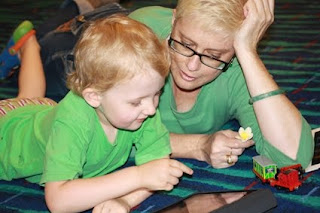
Children best develop a sense of the value of reading from seeing significant others, including parents, siblings and friends engaged in activities involving early literacy skills. This could be reading, but might also be looking at the labels on food whilst grocery shopping, catching public transport and buying tickets and navigating bus routes or even playing games together. While I agree that picture books are one incredible way of building literacy confidence and skills in children, new technologies like the iPad are also highly valued support mechanisms for developing literacy skills. as an added bonus, they often introduce an element of intergenerational learning by allowing children and adults to work together across digital media. If you are anything like me you might even find that the child takes the lead in the learning taking place.
Favourite apps at the moment include:
Nighty Night
The Wonky Donkey - complete with sing along
The Very Cranky Bear - just in time for National Simultaneous Story Time on 23 May 2012
http://www.alia.org.au/nss/
The Cat in the Hat
...and of course, for slightly older children, Alice for iPad with wonderful ways of connecting to all things Alice.



















